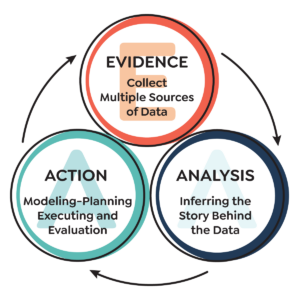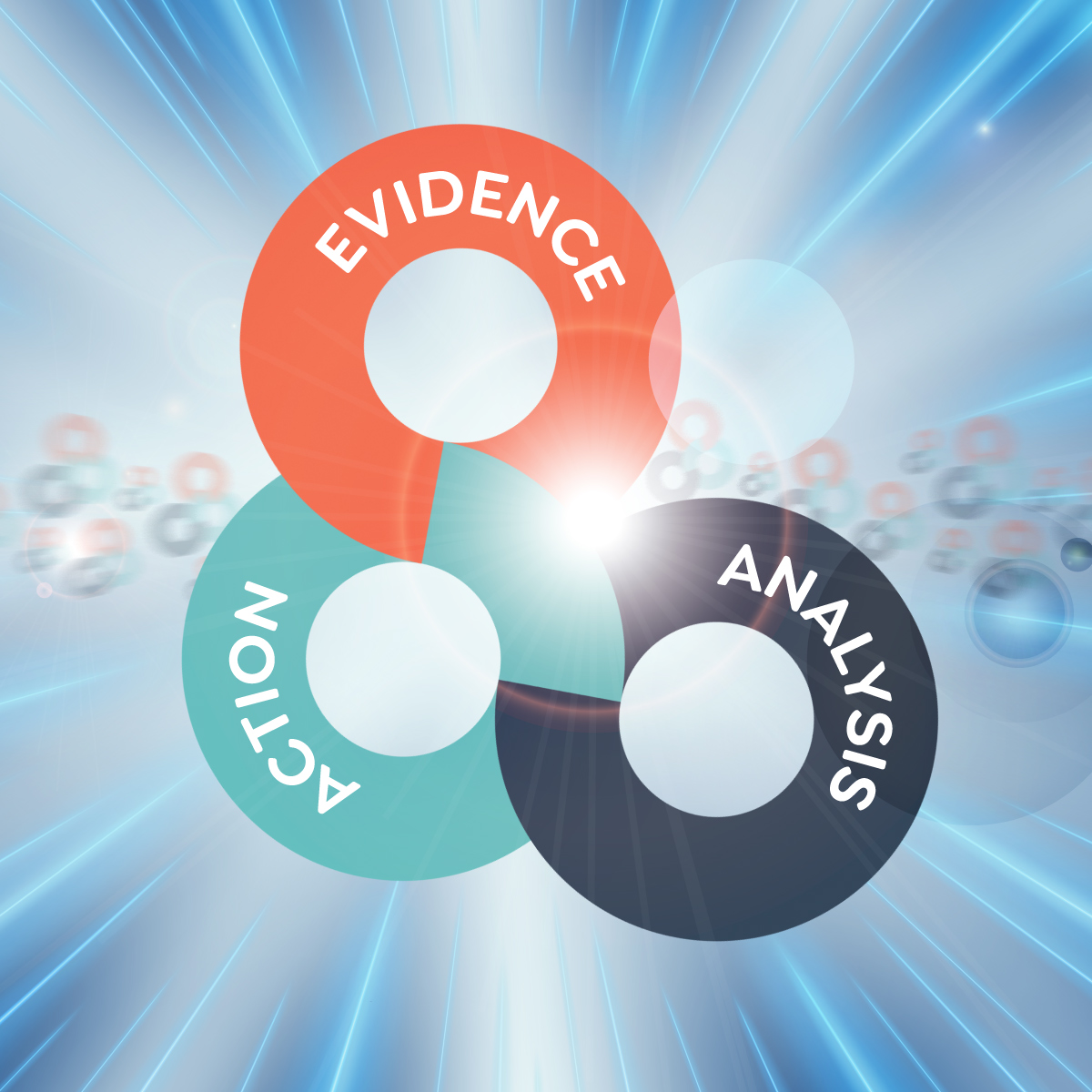The room is quiet at first—papers spread out, highlighters in hand, and learning goals written on chart paper at the center of the table. A team of teachers sits in a circle, each one reviewing a set of student writing samples from a recent shared assignment. They’re not grading. They’re noticing.
→ “What do you see in Amara’s response?” one teacher asks.
→ “She has the structure,” another replies, “but I’m wondering if she understood the purpose. Her voice feels hidden.”
→ Another chimes in: “Look at Zaire’s! He didn’t finish—but there’s powerful thinking in that opening paragraph. We might be missing his potential if we only looked for completion.”
This is not your typical data meeting. It’s something deeper. More human.
It’s an Impact Team in action—using the Analysis of Evidence Protocol (AOE) to center student thinking, make meaning of learner progress, and design next steps that honor where students are and where they’re capable of going.
The Power of the Analysis of Evidence Protocol
 The Analysis of Evidence Protocol is a structured routine for teacher collaboration. It’s not about test scores or compliance checklists. It’s about real student work—authentic artifacts of learning—and what those artifacts tell us about what students know, feel, and can do.
The Analysis of Evidence Protocol is a structured routine for teacher collaboration. It’s not about test scores or compliance checklists. It’s about real student work—authentic artifacts of learning—and what those artifacts tell us about what students know, feel, and can do.
The protocol follows the EAA Framework:
- Evidence: What are students producing?
- Analysis: What does this tell us about their thinking?
- Action: How do we respond in a way that grows learner agency?
Realizing the EAA Framework
Evidence: Impact Teams begin with a clear learning goal and co-constructed success criteria—co-constructed with students. They gather student artifacts (writing samples, models, performance tasks) that reflect learning tied to priority standards. These are not just “assignments”; they’re windows into student thinking.
Analysis: Teams look beyond correct or incorrect. They study the moves students made, what they attempted, what they misunderstood, and what brilliance might be overlooked. In this space, equity lives in the questions we ask:
→ Whose voices are showing up in the work?
→ What strengths can we build on?
→ Are we privileging one way of expressing knowledge?
Action: Rather than defaulting to re-teaching, Impact Teams design responsive, learner-centered moves—mini-lessons, goal-setting conferences, student self-assessment opportunities. The most powerful actions are not done to students, but with them.
The “Street Data” Connection
In Street Data, Shane Safir and Jamila Dugan challenge educators to stop chasing “satellite data” and instead get grounded in the lived experiences of learners. The Analysis of Evidence Protocol (AOE) brings this vision to life. It honors the messy, vibrant, unfinished nature of real learning—and calls educators to listen differently.
Street Data invites us to see students not as data points, but as whole people.
By analyzing student artifacts collaboratively, educators begin to hear the unspoken stories—students who are trying, resisting, wondering, or showing brilliance in unexpected ways.
They get closer to understanding not just what students know, but who they are as learners.
Why This Matters for Learner Agency
The protocol slows down the rush to solutions and creates space for curiosity, empathy, and innovation. It supports a shift from a deficit lens to an asset lens. And most importantly, it brings students into the heart of the instructional decision-making process.
Used consistently, this protocol supports schools in building a culture where:
- Teacher teams learn with and from one another.
- Learner voice shapes instruction.
- Agency isn’t an add-on—it’s the goal.
Meaningful Data Lives Closest to the Learner
In a time when data can feel overwhelming or impersonal, the Analysis of Evidence Protocol reminds us that the most meaningful data lives closest to the learner. When teams slow down, center the work of students, and ask the right questions together—they unlock the potential not just for better instruction, but for deeper connection and lasting transformation.



